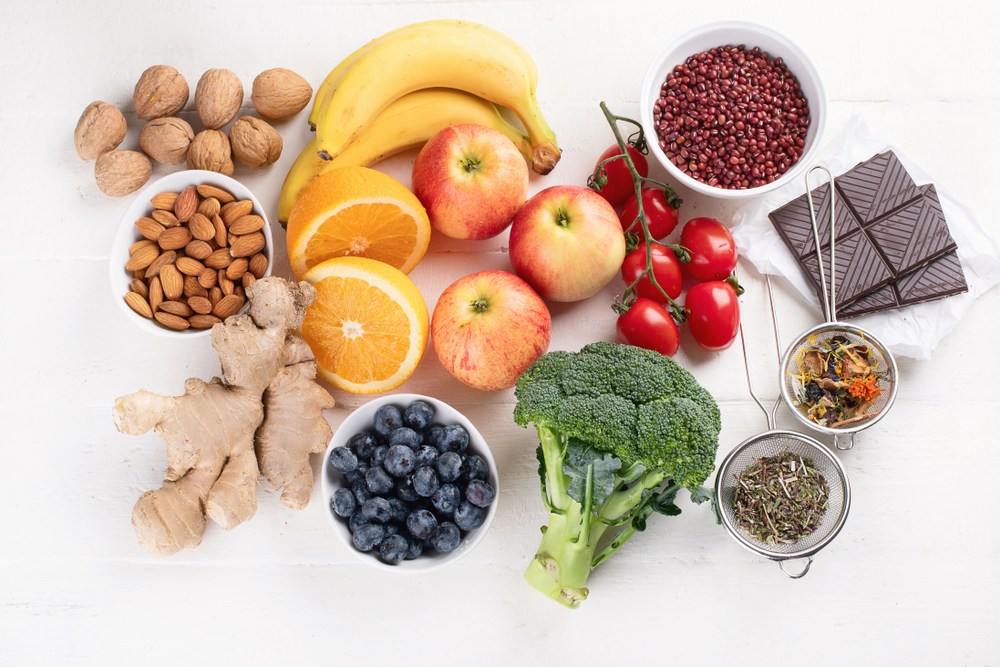High triglycerides can increase your risk of heart disease, stroke, and other health issues. However, the good news is that with the right dietary changes, you can significantly lower your triglyceride levels. This guide will help you understand how to create effective triglycerides- lowering meal plan, providing you with practical tips, a sample meal plan, and important foods to include.
Did you know?
Triglycerides are a type of fat found in your blood, derived from the food you eat. They are used for energy by your body, but consistently high levels can result in severe health problems. An effective meal for lower triglycerides can help manage these levels. Ideal triglyceride levels are below 150 mg/dL. Factors contributing to elevated triglyceride levels include:
- Poor diet (high in refined carbs and sugars)
- Physical inactivity
- Excessive alcohol consumption
- Obesity
- Certain medical conditions (like diabetes)
According to the American Heart Association, fasting before the test can provide the most accurate results
|
Triglyceride Levels (mg/dL) |
Category |
|
Less than 150 |
Normal |
|
150–199 |
Borderline high |
|
200–499 |
High |
|
500 or higher |
Very high |
Routine monitoring is recommended for individuals with risk factors, including obesity, diabetes, and a family history of cardiovascular disease.
Why Meal Planning Matters?
Meal planning is essential in managing triglyceride levels because it gives you control over what you eat, helping you make informed and healthy choices. By focusing on nutrient-rich foods and reducing unhealthy fats and sugars, you can craft a diet that directly supports heart health. A well-structured meal for lower triglycerides can reduce the likelihood of impulsive, unhealthy eating and ensures you’re consistently consuming balanced meals. It also helps with portion control, preventing overeating, which is crucial for maintaining a healthy weight and lowering triglyceride levels. In short, meal planning is a proactive approach to better health.
Dig Deeper: The Impact of High Diastolic Blood Pressure on Health
Key Foods to Include in Your Meal Plan
When crafting a meal for lower triglycerides, certain foods can be particularly beneficial. Here’s a breakdown of what to include in your meal planning
- Healthy Fats
Choose sources of healthy fats that can help lower triglyceride levels, such as
- Avocados: Rich in monounsaturated fats and fiber, avocados can help improve your lipid profile
- Olive Oil: A staple in the Mediterranean diet, olive oil is linked to lower triglycerides and improved heart health
- Nuts and Seeds: Almonds, walnuts, flaxseeds, and chia seeds are packed with omega-3 fatty acids
- Fiber-Rich Foods
High-fiber foods can help reduce triglyceride levels by improving insulin sensitivity, like
- Whole Grains: Brown rice, quinoa, and oats provide beneficial fiber
- Fruits and Vegetables: Aim for a variety of colors to get a range of nutrients. Berries, apples, and leafy greens are excellent choices for a meal for lower triglycerides
- Lean Proteins
Choose lean protein sources to reduce unhealthy fat intake, for example
- Fish: Fatty fish like salmon, mackerel, and sardines are rich in omega-3 fatty acids, which can lower triglycerides
- Poultry: Skinless chicken and turkey are healthier options compared to red meat
- Legumes: Beans, lentils, and chickpeas are high in protein and fiber, making them excellent meat substitutes
- Low-Sugar Options
Reducing sugar intake is vital for lowering triglycerides, instead use
- Natural Sweeteners: Use honey or maple syrup sparingly
- Non-Sugary Beverages: Choose water, herbal teas, or infused water instead of sodas and sweetened drinks help in creating a meal for lower triglycerides
|
Category |
Sources |
Reason |
|
Sugary Foods and Beverages |
Sodas, fruit juices, candy, pastries, desserts |
Increases triglyceride levels by boosting liver triglyceride production |
|
Refined Carbohydrates |
White bread, white rice, refined grains |
Rapidly elevates blood sugar levels, leading to higher triglyceride levels |
|
Trans Fats |
Fried foods, baked goods, some margarines |
Increases bad cholesterol (LDL) and lowers good cholesterol (HDL), contributing to higher triglyceride levels |
|
Saturated Fats |
Red meat, full-fat dairy products, palm and coconut oil |
Raises triglyceride levels and contributes to other heart disease risk factors |
|
Excessive Alcohol |
Beer, wine, spirits |
Raises triglyceride levels and can contribute to liver dysfunction affecting metabolism |
|
High-Sodium Foods |
Processed meats, canned soups, salty snacks |
Contributes to high blood pressure, often associated with elevated triglyceride levels |
|
High-Calorie Foods |
High-calorie snacks, fast food, large portion sizes |
Excess calorie consumption, especially from unhealthy sources, can lead to weight gain and higher triglyceride levels |
|
Highly Processed Foods |
Ready-to-eat meals, snacks with artificial additives, pre-packaged foods |
Often contain unhealthy fats, sugars, and high levels of sodium, negatively impacting triglyceride levels |
Foods to Avoid
For an effective meal for lower triglycerides, it’s essential to avoid certain foods that can exacerbate triglyceride levels
- Sugary Foods and Beverages
- Refined Carbohydrates
- Trans Fats
- Saturated Fats
- Excessive Alcohol
- High-Sodium Foods
- High-Calorie Foods
- Highly Processed Foods
Sample Meal Plan for Lowering Triglycerides
Creating a structured meal for lower triglycerides plan can simplify your efforts. Here’s a one-day sample meal plan that incorporates the foods mentioned above
|
Meal |
Food Options |
| Breakfast |
Overnight oats made with rolled oats, almond milk, chia seeds, and topped with fresh berries and a sprinkle of flaxseeds. Or a small handful of walnuts. |
| Lunch |
Grilled salmon salad with mixed greens, cherry tomatoes, cucumber, and a dressing of olive oil and lemon and steamed broccoli on the side A side of quinoa
|
| Snack |
Sliced apple with a tablespoon of almond butter Baby carrots and hummus Greek yogurt with a handful of walnuts |
| Dinner |
Stir-fried or grilled chicken breast with a mixed greens salad and olive oil dressing with broccoli, bell peppers, and brown rice, seasoned with garlic and ginger. Or A side salad of spinach with vinaigrette.
|
| Dessert |
A bowl of mixed fruit (like berries, oranges, and kiwi)
|
Tips for Successful Meal Planning
To maintain a consistent meal for lower triglycerides:
- Batch Cooking: Prepare larger portions of meals that can be stored and eaten throughout the week. This can save time and ensure you always have healthy options available.
- Mindful Eating: Pay attention to portion sizes and eat slowly to enhance digestion and satisfaction.
- Stay Hydrated: Drink plenty of water throughout the day, as dehydration can sometimes mimic hunger.
Lifestyle Changes
In addition to a well-structured meal for lower triglycerides, incorporating key lifestyle changes can further help
- Regular Exercise: Engaging in at least 150 minutes of moderate intensity exercise each week like walking, cycling, or swimming boosts your metabolism, helps burn excess fats, and improves overall cardiovascular health.
- Limit Alcohol: Moderating alcohol intake is crucial since excessive consumption can significantly raise triglyceride levels. Reducing or eliminating alcohol can make a noticeable difference in your triglyceride management.
- Maintain Healthy Weight: Even a modest weight loss can lead to a significant reduction in triglyceride levels. Shedding extra pounds through a combination of healthy eating and physical activity can improve your lipid profile and overall heart health.
Conclusion
Creating a meal for lower triglycerides is an effective way to take control of your health. By focusing on nutritious foods, reducing sugar intake, and making healthy lifestyle changes, you can successfully manage triglyceride levels. Remember, it’s always a good idea to consult with a healthcare provider or a registered dietitian before making significant dietary changes. With commitment and the right strategies, you can pave the way to a healthier heart.
Click on the link to discover the potential treatment for high cholesterol hyperlipidemia.




